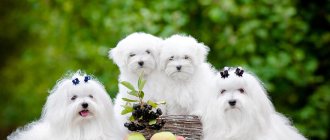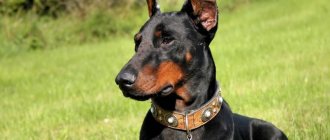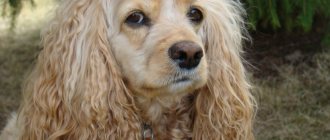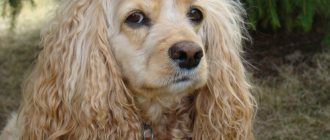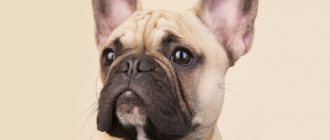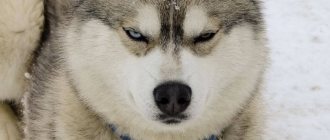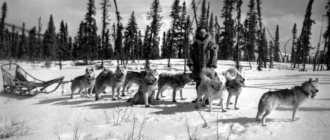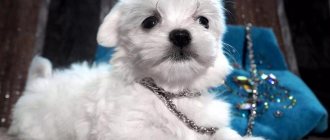History of the Dalmatian breed
Dalmatian
Mention of spotted dogs is found in documents that have reached us from different eras and states, starting from ancient Egyptian papyrus scrolls. However, based on meager verbal descriptions, it is simply impossible to reasonably judge who exactly was the ancestor of modern Dalmatians.
The first more or less reliable evidence of the existence of the breed dates back to the 16th–17th centuries. White dogs with small dark markings are depicted in surviving religious and secular works of art from that time: the altar painting in the Church of St. Mary (also known as "Gospe od anđela") in a small town on the resort island of Lošinj, a fresco in the Franciscan monastery in Zaostrog, church frescoes Santa Maria Novella in Florence, ceremonial portraits by Venetian and Tuscan artists, depicting influential nobles - for example, Cosimo II de' Medici. Since much of the earliest evidence was found in the historical region of Dalmatia, which is now part of Croatia, it is from here that the roots of the breed are usually traced. And the obvious consonance of the names speaks in favor of this version, officially adopted by the FCI.
There, on the warm shores of the Adriatic Sea, some “theoretical” works also saw the light of day. The Roman Catholic Archdiocese of Djakovo-Osijek has preserved in its archives the chronicles of Bishop Petar Bakic (1719) and Andreas Kecskemeta (1739), both talking about Croatian-specific dogs Canis Dalmaticus. In 1771, the Welsh naturalist Thomas Pennant wrote the book Synopsis of Quadrupeds, where he first named the Dalmatian breed. In 1790, English natural history scholar Thomas Bewick included Dalmatians in his General History of Quadrupeds.
In general, it should be said that it was in Britain that immigrants from Dalmatia gained particular popularity. Researchers suggest that representatives of other breeds were used for breeding here, in particular, black pointers and white English terriers. The latter died out more than a hundred years ago, but had a hand in the creation of many modern breeds: Boston Terrier, American Bulldog, Bull Terrier, American Staffordshire Terrier and others. Through the efforts of Foggy Albion breeders, by the second half of the 18th century, the appearance of Dalmatians that is recognizable today was formed.
Dalmatian puppy
At the same time, the “Italian dogs,” as the British initially called them, noticed their amazing ability to run almost tirelessly over long distances, not inferior in speed to horse-drawn carriages. Fleet-footed dogs were made guards of valuable “movable property” during city trips and long journeys - a kind of prototype of modern car alarms. In addition, during the trip, four-legged drivers followed the horses and, with light bites, forced tired or lazy animals to maintain the pace set by the coachman. Since then, the definition of carriage dogs has been assigned to them for several decades.
Although the functions of Dalmatians were not limited to this. They guarded houses, helped hunters of small and large game, and served as “bodyguards” for noble ladies walking without male company. During the Regency era, spotted pets became a sign of the high social status of the owner.
Once overseas, the unusual dogs changed their roles and, instead of rich nobles, accompanied voluntary fire brigades, which, before the mass introduction of internal combustion engines, could not do without real “horsepower”. White “bells” visible from a distance served as a warning to other road users about the approach of fire fighters and helped clear the way just as well as sirens and light signals. But even after the fire-fighting carriages became museum exhibits, many did not want to part with their living talismans. Today, charismatic dogs are a recognizable symbol of US firefighters.
As for the exhibition history, dogs from Dalmatia were first presented to a professional jury and the public in 1860 in Birmingham. Thirty years later, a breeders' club was created and an official breed standard was formulated. Two years earlier, she was recognized by the American Kennel Club. The international canine organization FCI registered Dalmatians in 1926.
The first representatives of the spotted brethren appeared in Moscow in 1982, but breeding on the territory of the USSR progressed very slowly due to a lack of fresh blood. And the demand for puppies was small, since many dog lovers simply had no idea about the existence of the breed. Specialty clubs arose only at the dawn of the 90s. Today, the largest concentration of kennels and owners of Dalmatians is in the capital, St. Petersburg, Nizhny Novgorod, Yekaterinburg, Novosibirsk and some other cities.
Origin theories
However, there are other theories about the Dalmatian's place of origin, supported by strong evidence.
In the epics of India, for example, you can often find a dog whose coloring is very similar to this breed. Most likely, dogs came from India to Europe along with gypsies or Roman legionnaires, and then spread throughout the world on ships where sailors took them.
In ancient Egypt, drawings of spotted dogs similar to the photo of a Dalmatian were also discovered. They could easily live here, since they tolerate the heat very well, characteristic of the climate of this country.
It is still not known exactly from which breeds Dalmatians originated. As an assumption, a version is put forward that these dogs can be considered relatives of spotted Great Danes, Istrian Pointers or Celtic marriages.
In 1860, two dogs of this breed were brought to England from Dalmatia for an exhibition. And 30 years later, the English club developed a breed standard, although these dogs received international recognition only in the 20s of the 20th century.
Dalmatian appearance
Athletic and hardy, elegant dogs of medium to large size. Males weigh on average 18-27 kg with a height at the withers of 58-61 cm, females - 16-24 kg and 56-58 cm, respectively.
Head
Dalmatian face
The Dalmatian's head is proportional to the body. Long, flat, not too wide between the ears. The muzzle has a pronounced stop and is equal in length to or slightly shorter than the occipital part. There are no folds of skin on the head.
Ears
Moderately large, set wide on the head, pressed to the sides. Triangular in shape, tips slightly rounded. The color is necessarily spotted, matching the general coloring.
Eyes
Dalmatians have medium-sized, oval-shaped eyes. The color corresponds to the coat: dark brown for dogs with black spots, amber for dogs with brown spots. The look is clear and intelligent. The eyelids fit well to the eyeball. Their edges are well pigmented (depending on color - black or brown).
Nose
The lobe is wide, fully pigmented (black or brown in accordance with the base color), the nostrils are wide open.
Lips and teeth
The lips fit tightly to the jaw. The jaws are strong. The bite is scissor-shaped, with the upper teeth completely overlapping the lower teeth.
Neck
Strong, quite long.
Frame
The Dalmatian's body is well built, with muscular shoulders, a deep chest and well-arched ribs. The back is straight and powerful. The loin and croup are muscular, the slope is slight.
Limbs
The front legs are straight, elbows pressed to the body. The hind legs are muscular, the knees are strong and well developed. The paws resemble those of a cat: compact and round, with arched toes. The claws can be pigmented depending on the base color.
Tail
The Dalmatian's tail is quite long, spotted, and straight. It is thicker at the base and tapers towards the tip.
Wool
Short, dense, smooth, glossy, hard.
Dalmatian with brown spots
Dalmatian with black spots
Color
On a mostly white background there are black or brown (exactly the same color!) spots with clear contours, which are located symmetrically along the body, on the head, ears and tail.
Features of feeding and diet
You should control the portion size of the Dalmatian - he sweeps away food at a time, just have time to feed it. But this eating behavior is fraught with obesity, so be strict in this regard.
Adults need to be fed 2-3 times a day, puppies require more food - up to 5 times, but with smaller portions.
It is recommended to establish a feeding schedule: feed in the morning, afternoon and evening at the same time. Thanks to their high intelligence, Dalmatians quickly get used to the regime.
A traditional diet is the best choice for dog owners. It can be based on both high quality dry food and natural products.
Essential foods in a Dalmatian's diet:
- poultry, beef, rabbit, turkey. Does not accept minced meat or fatty meat.
- sea fish;
- eggs two to three times a week
- porridge;
- dairy and fermented milk products;
- various types of vegetable oils;
- fish fat;
- fruits and vegetables;
- berries.
The following foods should be excluded from the diet:
- confectionery;
- sausages;
- seasonings;
- salty;
- tubular bones.
Remember to change clean water frequently and keep it readily available. Sometimes you need to place 2-3 bowls of water around the house.
Photo of an adult Dalmatian
Tips for choosing a puppy
Before going to a nursery or breeder, read reviews on the Internet, study groups on social networks - this is accessible in the age of information technology.
In advance you can see how well the breeders are doing:
- Is the room clean?
- what kind of enclosures the dogs are kept in;
- what Dalmatian puppies and their parents look like;
- What is the attitude of the breeder towards his animals?
If you are satisfied with everything, do not delay your trip. Already on the spot, you have to make one of the difficult choices - to understand which puppy is after your heart. You should not look for a Dalmatian in advance, that is, based on photographs or descriptions: without personal acquaintance, the choice usually does not take place.
There are often cases when owners wanted one puppy based on a photo, but chose another puppy on the spot. That's right: you should like the baby's character, and appearance is secondary.
How does a healthy puppy behave?
- he is active and curious;
- the eyes and nose are shiny, the tummy is moderately well-fed;
- it does not emit any unpleasant odors;
- The baby is not shy or aggressive.
It also happens that a puppy chooses its owner. Then all you have to do is accept this gift of fate and take someone who no longer wants to part with you.
Dalmatian character
Dalmatians are not suitable for inexperienced owners and people who need the company of a phlegmatic "couch" dog. Incredibly active by nature, without proper physical activity, they direct unspent energy into destructive pranks, causing damage to their homes. In such a situation, the animal becomes uncontrollable, it does not obey commands and completely ignores prohibitions.
Dalmatian plays with a child
Failure to understand the background of this behavior led to the formation of the erroneous opinion of low intelligence. If the Dalmatian does not respond to “No!” and “Come to me!”, this does not mean at all that he is stupid. The point is simply that the owner made serious mistakes when raising him, did not assert his authority and continues the chain of mistakes by not satisfying the natural needs of the pet for physical exercise.
Proper training, a balanced and calm relationship with the puppy, and early socialization contribute to the formation of a healthy and strong psyche. Such dogs perfectly sense a person’s mood and adapt to it, they are happy to follow commands, do not start fights in walking areas, are reserved with strangers, and are friendly towards animals.
Boss, you are the best!
Dalmatians do not become attached to one “their” person; they love and protect all household members equally, and at the same time strive to take an active part in everything that people do. They get along well with other pets, especially if they grow up with them. There is a long-standing craving for the company of horses in the genes, but few people today own a stable, so the company of a dog or cat would be suitable.
For a family with small children, the appearance of an energetic “plum pudding,” as the English affectionately call these dogs, can be a problem. But not because they are naturally aggressive and capable of deliberately harming the little one. On the one hand, impetuous and abrupt by nature, Dalmatians do not measure up to their strength and often knock down children who are inappropriately on the way. On the other hand, animals with hearing problems instinctively defend themselves from the “threat” when they are quietly approached from behind or disturbed in their sleep, and it is difficult for little ones to immediately learn the intricacies of handling a special family member.
But in most cases, Dalmatians get along just fine with older children and teenagers, feeling a kindred restless soul.
Poll: What is your Dalmatian like?
Stubbornness
In general, this word has nothing to do with us.
11.11%
He can be a little stubborn if the stars don’t align, but basically he’s a very flexible dog.
75.56%
Yes, such a trait is present in our character, and it is clearly expressed.
13.33%
Voted: 45
Independence
This word does not apply to my pet.
0%
Quite independent, but will never refuse to play and cuddle together.
100%
Very often on my own mind.
0%
Voted: 2
Temperament
Playful, energetic, sometimes too much, and also loves to talk.
0%
When there is an opportunity to “break away”, a volcano of energy awakens in him. But otherwise he is quite calm and balanced.
100%
Philosopher and couch potato, these two words best describe my dog's temperament.
0%
Voted: 1
Have you counted the spots on your pet?
Yes, and I know exactly the quantity.


